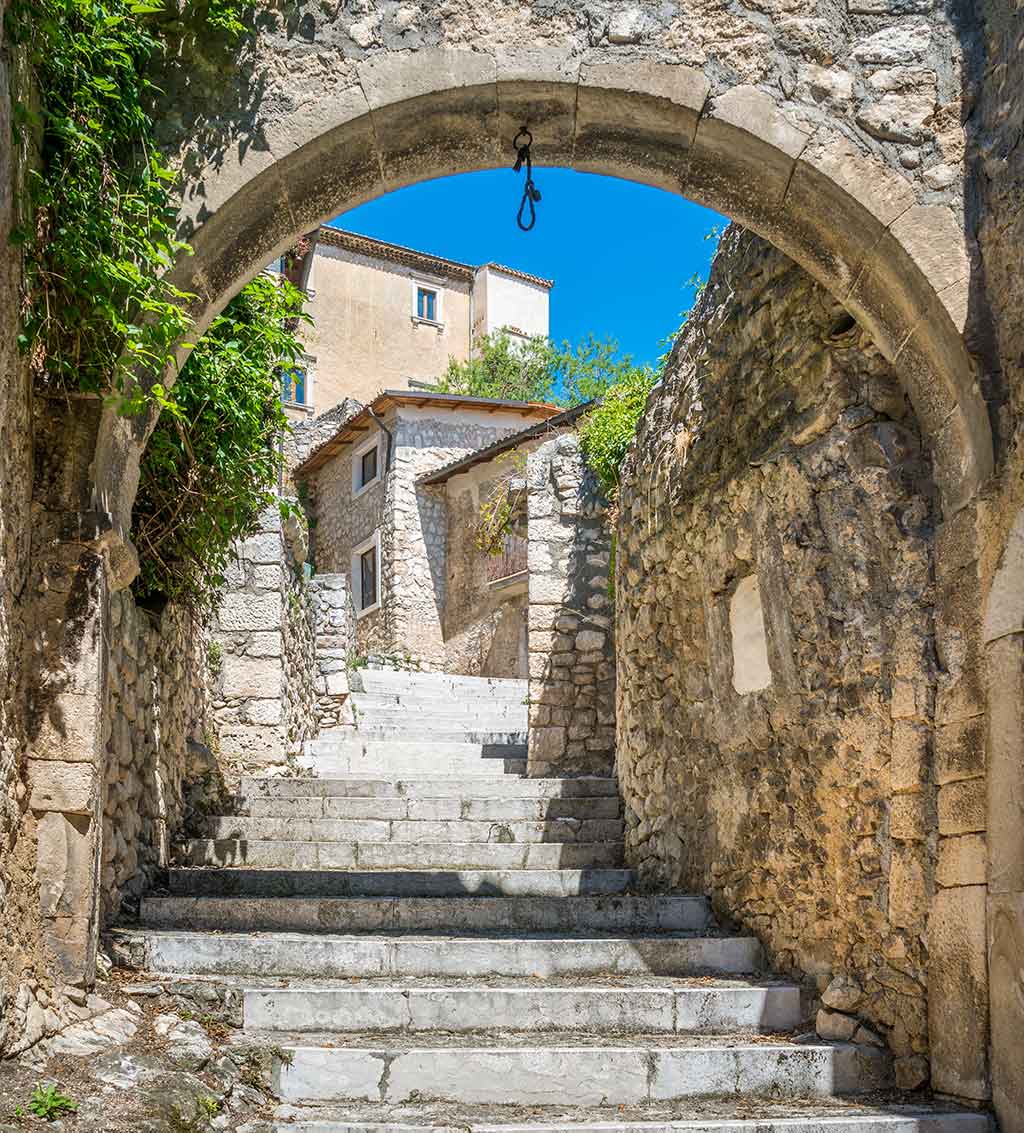Welcome
to Navelli Italy. If you’are planning to visit Navelli for your next trip and you are
looking for the best places to visit, here you’ll find tips and suggestions of most
popular point of interest and activities not to be missed in Navelli and surrounding.
Travelers will appreciate this italian town with
his rich historical and artistic heritage, local culture and environment. Discover the monuments, buildings, natural
treasures and all the details that characterize Navelli and its territory. Share and suggest a place you've
visited.

Historic center of Navelli, stone portal
Navelli is a very old country, its history starts from the sixth century before Christ. But only long after, thanks to the production of saffron, it became rich and wealthy and in the '300 and '400, at the top of its glory, most of the buildings were built. Many were built but as many did not resist the earthquakes that unfortunately regularly shake this part of Italy.
Fortunately, there is enough left to be able to visit this beautiful village. Upon arrival you can see the high walls of the medieval fortress where the Santucci Baronial Palace was built. It was built in 1632 as you can read on the inscription in the well in the inner courtyard. Near is the church of San Sebastiano with a beautiful carved door at the side entrance.
When you pass the Castle Gate, the door next to Palazzo Santucci, you automatically arrive in the old center. From above you have a beautiful view of the Maiella mountains and also on the steep staircases of Via Porta San Pelino.
The village is full of alleys and narrow streets and perfect corners for taking beautiful photos. If you look good, you will find special details to capture such as the old communal ovens or troughs next to the houses to feed donkeys.
Once you leave the village there are various palaces and churches to visit. Palazzo De Roccis, the Church of the Rosary with a magnificent wooden organ of the '800 with beautiful decorations.
Outside the town you can visit the oldest church in Navelli, Santa Maria in Cerulis of the eleventh century that has resisted earthquakes until today.
written by Marilyn Fitzpatrick - Last update: 02/11/2021
This guide has been translated automatically through a third party service. Visititaly offers these automatic translations to help site visitors, however the automatic translations may contain inaccuracies, errors or inaccuracies. You can contact us to report inaccuracies or errors and we will check the translation.